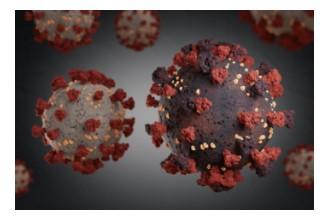
In the largest UK study of its kind conducted to date, UK Coronavirus Immunology Consortium researchers have identified differences in the immune response to COVID-19 between people with no symptoms and those suffering a more severe reaction to the virus.
Researchers from the Wellcome Sanger Institute, Newcastle University, University College London, University of Cambridge, EMBL’s European Bioinformatics Institute (EMBL-EBI) and their collaborators within the Human Cell Atlas initiative, found raised levels of specific immune cells in asymptomatic people. They also showed people with severe symptoms had lost these protective cell types, but gained inflammatory cells. These differences in the immune response could help explain serious lung inflammation and blood clotting symptoms, and could be used to identify potential targets for developing therapies.
The research, published in Nature Medicine, is one of the only studies to include people who were asymptomatic. This large-scale collaborative study with the UK Coronavirus Immunology Consortium is part of the Human Cell Atlas initiative to map every cell type in the human body, to transform our understanding of health, infection and disease.
So far, the COVID-19 global pandemic has caused millions of deaths and many more infections worldwide. Symptoms vary widely in severity and can range from a mild cough to severe respiratory distress, blood clots and organ failure. Several previous studies have highlighted a complex immune response in the blood, but until now the full coordinated immune response and how this differs between symptomatic and asymptotic patients had not been investigated in detail.
To understand how different immune cells respond to the infection, researchers from Newcastle, Cambridge and London analysed blood samples from 130 people with COVID-19. Patient symptoms ranged from asymptomatic to critically severe. The team performed single-cell sequencing from ~800,000 individual immune cells, along with detailed analysis of cell surface proteins and antigen receptors found on immune cells in the blood. They revealed differences in multiple types of immune cells that are involved in the immune response to COVID-19.
Those with no symptoms had increased levels of antibody-producing B cells that are found in mucus passages such as the nose. Patients with mild to moderate symptoms also had high levels of B cells and helper T cells. However, these protective B cells were missing in those with severe symptoms, indicating the importance of an effective antibody-associated immune response at the nose and other mucus passages.
Importantly, people with more severe symptoms, that were hospitalised with COVID-19, had uncontrolled increases in monocytes and killer T cells. High levels of these cells can lead to lung inflammation. Those with severe disease also had raised levels of platelet-producing cells, which help blood to clot.
While it is not yet understood how infection with SARS-CoV-2 stimulates these immune responses, this study reveals some of the cellular changes that occur in COVID-19 that may contribute to an increased risk of blood clotting and inflammation in the lungs. This also uncovers potential new therapeutic targets to help protect patients against inflammation and severe disease. For example, it may be possible to develop treatments that decrease platelet production or reduce the number of killer T cells produced, however more research is required. In the future, it may be possible to identify those who are more likely to experience moderate to severe disease by looking at levels of these immune cells in their blood.
Professor Muzlifah Haniffa, senior author from Newcastle University and Senior Clinical Fellow at the Wellcome Sanger Institute, said:
“This is one of the only studies of its kind that looks at samples collected from asymptomatic people, which helps us start to understand why some people react differently to COVID-19 infection. It could also explain symptoms such as lung inflammation and blood clots. The immune system is made up of lots of different groups of cells, similar to the way an orchestra is made up of different groups of instruments, and in order to understand the coordinated immune response, you have to look at these immune cells together.”
Dr Sarah Teichmann, senior author from the Wellcome Sanger Institute and co-chair of the Human Cell Atlas Organising Committee, said:
“This is a great example of using the Human Cell Atlas to understand COVID-19 and identify which of our cells are critical for infection and treatment. This information can be used to better understand why different people react to coronavirus in different ways. The data is openly accessible and can provide a basis for developing potential new therapies, to reduce the spread of the virus, or to protect those who start to develop severe disease.”
Professor Paul Moss, Principal Investigator of the UK Coronavirus Immunology Consortium, said:
“This is an excellent example of the quality of research that can be achieved through a collaborative approach to science. Understanding why some patients experience severe symptoms of COVID-19, while others appear unaffected, continues to be one of the biggest questions immunologists face during this pandemic. This study clearly demonstrates how bringing researchers with different areas of expertise together, as we are successfully doing within the UK Coronavirus Immunology Consortium, allows us to understand the effect the SARS-CoV-2 virus has on the immune system in great detail.”
This work was partially supported by the UK Coronavirus Immunology Consortium (UK-CIC), funded by UK Research and Innovation and NIHR. Our grateful thanks go to all the patients who volunteered to take part in this study.
For more information, details of the full paper are as follows: Stephenson et al. 2021 The immune response in COVID-19 detailed by single cell multi-omics. Nature Medicine. DOI: 10.1038/s41591-021-01329-2
